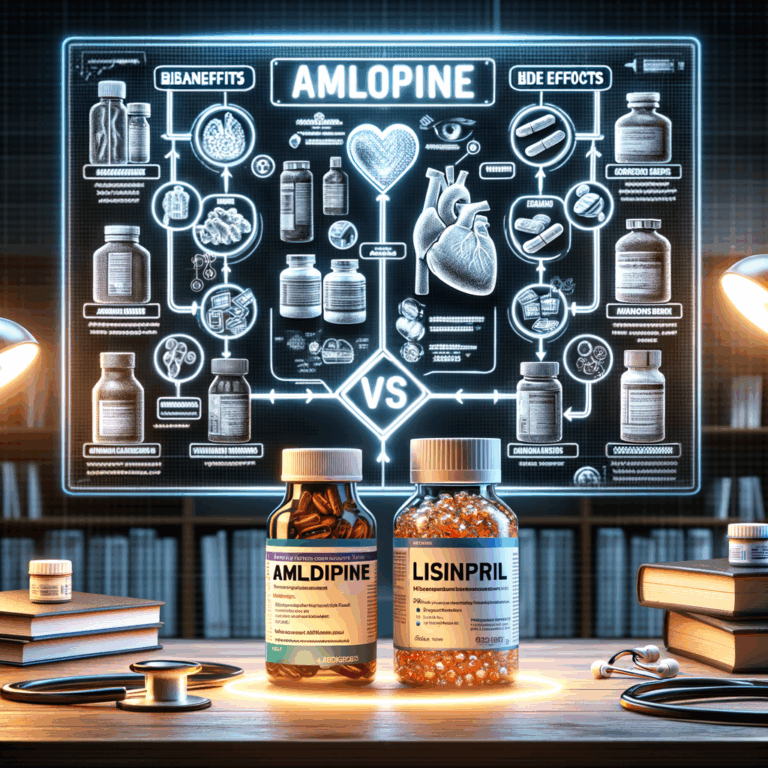
- Introduction
- What Is Metoprolol?
- Common Uses
- Available Forms and Strengths
- General Dosing Principles
- Metoprolol Dosage by Condition
- Hypertension
- Angina Pectoris
- Heart Failure
- Post-Myocardial Infarction (After Heart Attack)
- Atrial Fibrillation and Rate Control
- Special Populations and Dose Adjustments
- Elderly Patients
- Patients with Kidney Disease
- Patients with Liver Disease
- Pregnancy and Breastfeeding
- How to Take Metoprolol Safely
- Missed Dose Guidance
- Overdose Actions
- Major Warnings and Contraindications
- Caution with Respiratory Disease
- Diabetes Considerations
- Drug Interactions to Watch For
- Side Effects: What to Expect
- Managing Mild Side Effects
- Monitoring While on Metoprolol
- Lifestyle and Self-Care Tips
- Driving and Machine Use
- Safe Storage and Disposal
- Tapering and Discontinuation
- Practical Tips to Remember
- When to Call Your Doctor
- Alternatives to Metoprolol
- Patient Stories and Practical Scenarios
- Summary: Key Takeaways
- Frequently Asked Questions (FAQs)
- 1. Can I drink alcohol while taking metoprolol?
- 2. How long does metoprolol take to work?
- 3. Can metoprolol cause depression?
- 4. Is metoprolol safe with herbal supplements?
- 5. Will metoprolol affect my exercise performance?
- 6. Can metoprolol cause weight gain?
- 7. Is generic metoprolol as effective as brand-name?
- 8. How does metoprolol affect sexual function?
- 9. Can children take metoprolol?
- 10. What should I carry in an emergency?
- References
Introduction
Metoprolol is a commonly prescribed beta-blocker. It treats several heart and blood pressure conditions. People often ask about Metoprolol Dosage and Warnings. This guide gives clear safety tips and practical advice. You will learn how to take it correctly. You will also review risks, interactions, and monitoring steps.
I wrote this post for patients and caregivers. I used simple words for easy reading. Each section stays concise and actionable. Read the warnings carefully before making changes. Always consult your healthcare provider for personal guidance.
What Is Metoprolol?
Metoprolol slows the heart rate and lowers blood pressure. It blocks beta-1 receptors in the heart. That reduces heart workload and oxygen demand. Doctors prescribe it for hypertension, angina, heart failure, and post-heart attack care.
Metoprolol comes in two main forms. Immediate-release tablets are taken several times daily. Extended-release tablets release the drug slowly and work once daily. Both types contain the same active ingredient. However, doses and schedules differ.
Common Uses
Patients commonly use metoprolol for high blood pressure. It also treats chest pain from angina. Doctors use it in heart failure to improve survival. After a heart attack, metoprolol reduces the chance of future events.
Doctors sometimes prescribe metoprolol for atrial fibrillation. It helps control rapid heart rates. It also treats certain types of tremors and migraine prevention. Use for these conditions depends on individual health needs.
Available Forms and Strengths
Metoprolol comes in two formulations. These are metoprolol tartrate and metoprolol succinate. Tartrate is often immediate-release. Succinate is often extended-release.
Common tablet strengths include 25 mg, 50 mg, and 100 mg. Extended-release tablets commonly come in 25 mg, 50 mg, 100 mg, and 200 mg. Injectable forms exist for hospital use. Always check the prescription to confirm the type.
General Dosing Principles
Doctors tailor doses based on condition and patient factors. They start at a low dose and adjust slowly. This approach reduces side effects and improves tolerance. Never change dose without speaking to your provider.
Timing and consistency matter. Take extended-release tablets at the same time daily. Immediate-release forms often work best when taken with food. Use the same brand or generic when possible to avoid variability.
Metoprolol Dosage by Condition
Hypertension
For high blood pressure, adults typically start with 50 mg twice daily for immediate-release. For extended-release, they often start with 50 mg once daily. Doctors adjust based on response. Typical maintenance ranges from 100 mg to 400 mg per day.
Monitor blood pressure within weeks after starting. If blood pressure remains high, doctors may increase the dose. They may add other blood pressure medicines too. Use the lowest effective dose.
Angina Pectoris
Common starting doses for angina are 50 mg twice daily for immediate-release. Extended-release often starts at 100 mg once daily. Doses range from 100 mg to 400 mg daily. Adjustments depend on symptom relief and tolerance.
Metoprolol reduces the frequency of chest pain episodes. It also helps prevent exercise-induced angina. Continue regular checkups to monitor heart health and side effects.
Heart Failure
For chronic heart failure, doctors usually use the extended-release form. They start with low doses, often 12.5 mg to 25 mg once daily. They double the dose every 2 weeks as tolerated. Target doses commonly are 150 mg once daily for adults.
Patients require close monitoring for worsening symptoms. Doctors watch heart rate, blood pressure, and fluid status. They may adjust other heart medications during titration.
Post-Myocardial Infarction (After Heart Attack)
After a heart attack, doctors start metoprolol to reduce complications. Immediate-release dosing might start at 25 to 50 mg every 6 to 12 hours. Extended-release often begins at 100 mg once daily. Dosing continues for months to years depending on recovery.
Cardiac monitoring often occurs in the hospital. Providers adjust doses to maintain safe heart rate and blood pressure. Long-term therapy reduces future heart attacks and mortality.
Atrial Fibrillation and Rate Control
Metoprolol helps control heart rate in atrial fibrillation. Doses vary widely based on heart rate and symptoms. Doctors usually start low and titrate to target heart rate. Typical rates aim for resting heart rate under 80 to 100 beats per minute.
Use with other rate-control drugs requires careful coordination. Avoid abrupt changes that may harm rhythm control. Regular ECGs and clinic visits help guide therapy.
Special Populations and Dose Adjustments
Elderly Patients
Older adults often need lower starting doses. Their bodies clear drugs more slowly. They also face higher risk of low blood pressure and slow heart rate. Doctors start low and increase cautiously.
Monitor for dizziness, falls, and confusion. Adjust doses based on symptoms and lab findings. Check kidney and liver function regularly.
Patients with Kidney Disease
Metoprolol does not require major dose changes for mild kidney disease. Severe kidney impairment may still tolerate metoprolol. However, watch for increased sensitivity and side effects. Dosing decisions depend on the overall clinical picture.
Dialysis does not remove significant amounts of metoprolol. Yet, monitor blood pressure closely during changes in dialysis settings. Coordinate dosing with the nephrology team.
Patients with Liver Disease
The liver metabolizes metoprolol heavily. Severe liver disease can raise blood levels significantly. Start at a lower dose and monitor closely. Adjust or avoid metoprolol if liver function worsens.
Check liver enzymes if symptoms such as jaundice appear. Discuss alternatives if risk outweighs benefit.
Pregnancy and Breastfeeding
Metoprolol crosses the placenta and enters breast milk. Doctors consider risks and benefits in pregnancy. They sometimes use it when needed for maternal heart health. Monitor fetal growth and newborn heart rate.
During breastfeeding, watch infants for slow heart rate or low blood sugar. Discuss alternative medications with your provider if concerns arise.
How to Take Metoprolol Safely
Take metoprolol exactly as prescribed. Do not crush or chew extended-release tablets. Swallow them whole to maintain slow release. For immediate-release tablets, follow the dosing schedule provided.
Take doses at the same time each day. Use a pill organizer or phone reminder to improve adherence. If food affects your stomach, take with meals unless told otherwise.
Missed Dose Guidance
If you miss a dose, take it as soon as you remember. However, skip it if the next dose is due soon. Do not double up to make up a missed dose. Doubling may cause low blood pressure or slow heart rate.
If you frequently miss doses, set reminders. Talk to your provider about simplifying the regimen. Extended-release options may reduce missed doses.
Overdose Actions
An overdose can cause dangerously slow heart rate or low blood pressure. It can also cause severe dizziness or loss of consciousness. If you suspect overdose, seek emergency care immediately.
Bring the medication container to the emergency department. Doctors may use activated charcoal, IV fluids, and medications to reverse effects. Hospital monitoring often lasts until heart rate and blood pressure normalize.
Major Warnings and Contraindications
Do not use metoprolol if you have severe bradycardia. Also avoid it if you have second- or third-degree heart block without a pacemaker. Symptomatic hypotension is another contraindication.
Avoid metoprolol during an acute bout of heart failure unless a physician recommends it. Do not stop metoprolol abruptly. Abrupt cessation can trigger angina or heart attack. Instead, taper under medical supervision.
Caution with Respiratory Disease
Metoprolol is cardioselective but can affect lungs at higher doses. People with asthma or COPD should use it cautiously. Monitor breathing and report increased wheeze or shortness of breath.
Doctors may choose other treatments for severe reactive airway disease. If metoprolol is necessary, they use the lowest effective dose.
Diabetes Considerations
Metoprolol can mask signs of low blood sugar. It may hide fast heart rate, a key hypoglycemia symptom. Diabetic patients must monitor glucose more closely. Inform your diabetes care team when starting metoprolol.
It may also delay recovery from low blood sugar. Keep glucose tablets or snacks available for emergencies.
Drug Interactions to Watch For
Metoprolol interacts with many drugs. Combining it with other blood pressure medicines can cause too much lowering. Avoid sudden additive effects with calcium channel blockers like verapamil and diltiazem.
CYP2D6 inhibitors can raise metoprolol levels. Examples include fluoxetine and paroxetine. This increases side effect risk. Discuss all prescriptions and over-the-counter drugs with your doctor.
Here is a simple interaction table:
| Drug/Class | Interaction | Action |
|---|---|---|
| Calcium channel blockers (verapamil) | May cause slow heart rate and low blood pressure | Monitor closely; avoid without medical advice |
| Antiarrhythmics (amiodarone) | Increased beta-blocker effects | Adjust dose; monitor heart rhythm |
| SSRIs (fluoxetine) | Reduces metoprolol breakdown | May need lower metoprolol dose |
| Insulin and sulfonylureas | Can mask hypoglycemia signs | Monitor blood sugar often |
Side Effects: What to Expect
Common side effects include tiredness, dizziness, and slow heart rate. You might also experience cold hands or feet. Sexual dysfunction occurs in some people.
Serious side effects require urgent care. These include very slow heart rate, fainting, or severe shortness of breath. Report chest pain or signs of worsening heart failure immediately.
Managing Mild Side Effects
Many side effects improve over time. Fatigue often lessens after a few weeks. If dizziness continues, change positions slowly.
Talk to your provider about side effects that bother you. They may lower the dose or switch medications. Never stop metoprolol suddenly.
Monitoring While on Metoprolol
Your doctor will check heart rate and blood pressure regularly. They may also order ECGs. For heart failure, they monitor weight and fluid status closely.
Lab tests for kidney and liver function may occur during long-term use. People with diabetes need more frequent glucose checks. Keep a record of home blood pressure and heart rate readings.
Lifestyle and Self-Care Tips
Maintain a heart-healthy diet and exercise plan. These steps enhance metoprolol’s benefits. Reduce sodium intake to help control blood pressure.
Avoid alcohol in excess. Alcohol can worsen blood pressure and increase dizziness. Also avoid sudden intense exercise until you know how metoprolol affects you.
Driving and Machine Use
Metoprolol can cause dizziness or tiredness. Do not drive or operate heavy machinery until you know how you react. Test your response in a safe environment first.
If dizziness occurs while driving, safely pull over and seek help. Inform your driving authority if required by local law.
Safe Storage and Disposal
Store metoprolol at room temperature away from light. Keep it in its original container with the lid tightly closed. Keep out of reach of children and pets.
Dispose of unused pills safely. Use community take-back programs if available. Otherwise, follow local guidelines for medication disposal.
Tapering and Discontinuation
Do not stop metoprolol suddenly. Stopping abruptly raises the risk of angina and heart attack. Doctors usually taper the dose over 1 to 2 weeks.
If you need to stop due to side effects, talk to your provider first. They will create a safe plan to switch medications or reduce dose gradually.
Practical Tips to Remember
– Keep a medication list with doses and times.
– Use a daily pill organizer or phone reminders.
– Refill prescriptions early to avoid gaps.
– Report new symptoms promptly to your provider.
– Carry a card noting you take metoprolol in emergencies.
Following these simple steps improves safety and effectiveness.
When to Call Your Doctor
Contact your provider immediately for several issues. These include chest pain, fainting, or severe shortness of breath. Also call for very slow heart rate or sudden swelling in the legs.
If you develop a new rash, yellowing skin, or severe fatigue, seek care. Any fainting episode requires urgent evaluation.
Alternatives to Metoprolol
Several other beta-blockers exist, like atenolol and propranolol. Some people might need a different class, such as ACE inhibitors or calcium channel blockers. The choice depends on your medical history and condition.
Discuss alternatives if metoprolol causes problems. Your doctor tailors therapy to your needs. Do not switch medications without medical advice.
Patient Stories and Practical Scenarios
Many patients find metoprolol life-changing. One person reduced chest pain and returned to daily walks. Another used extended-release tablets and stopped missing doses.
However, some experience fatigue that affects work. In those cases, doctors adjusted dose or tried another drug. Talk openly with your provider about daily impacts.
Summary: Key Takeaways
Metoprolol works well for many heart conditions. Follow the prescribed dose and schedule carefully. Watch for slow heart rate and low blood pressure.
Inform your provider about all medications and health issues. Report side effects early. Never stop metoprolol without medical guidance.
Frequently Asked Questions (FAQs)
1. Can I drink alcohol while taking metoprolol?
Light to moderate alcohol may be safe but can worsen dizziness and low blood pressure. Avoid binge drinking. Check with your doctor for personal advice.
2. How long does metoprolol take to work?
You may feel effects within hours of the first dose. Full benefits for blood pressure can take several weeks. For heart failure benefits, it may take months.
3. Can metoprolol cause depression?
Some people report mood changes. Evidence links beta-blockers to depression rarely. If you notice mood shifts, tell your doctor.
4. Is metoprolol safe with herbal supplements?
Herbal supplements can interact with prescription drugs. Avoid St. John’s wort and other supplements without medical approval. Always list supplements to your healthcare team.
5. Will metoprolol affect my exercise performance?
Yes, it reduces maximum heart rate and exercise capacity. You may tire sooner during high-intensity workouts. Talk to your doctor before starting new exercise routines.
6. Can metoprolol cause weight gain?
Some individuals report mild weight gain. Often, weight changes relate to fluid retention or lifestyle. Monitor diet and activity; discuss persistent gain with your provider.
7. Is generic metoprolol as effective as brand-name?
Generics contain the same active ingredient and are generally equally effective. However, extended-release formulations can vary slightly. Check with your pharmacy if switching brands.
8. How does metoprolol affect sexual function?
Some people experience decreased libido or erectile dysfunction. This effect varies by individual. Discuss concerns with your provider; alternatives exist.
9. Can children take metoprolol?
Pediatric dosing exists but depends on weight and condition. A pediatric cardiologist or pediatrician should prescribe it. Never give adult doses to children.
10. What should I carry in an emergency?
Carry a medication list, emergency contact, and the reason for metoprolol use. Note any known drug allergies. This information helps first responders.
References
– U.S. Food and Drug Administration — Metoprolol (full prescribing information). https://www.accessdata.fda.gov/drugsatfda_docs/label/2019/018936s079s091s103lbl.pdf
– American Heart Association — Beta Blockers. https://www.heart.org/en/health-topics/heart-attack/after-a-heart-attack/treatments-after-a-heart-attack/beta-blockers
– UpToDate — Metoprolol: Drug information (subscription may be required). https://www.uptodate.com/contents/metoprolol-drug-information
– National Center for Biotechnology Information — Metoprolol Pharmacology and Use. https://www.ncbi.nlm.nih.gov/books/NBK548493/
– Mayo Clinic — Beta blockers overview. https://www.mayoclinic.org/diseases-conditions/high-blood-pressure/in-depth/beta-blockers/art-20044522
Note: This article offers general information. It does not replace medical advice. Always follow your healthcare provider’s recommendations for Metoprolol Dosage (Incomplete: max_output_tokens)



